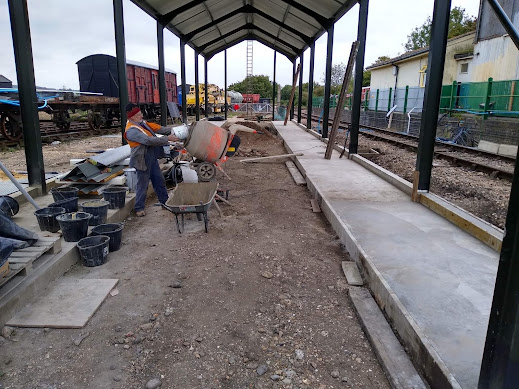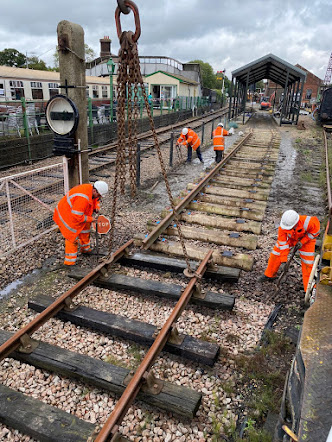London Suburban tank (N7) locomotive progress: Nov2020
The forthcoming winter months will be a
testing time for the loco team as they prepare the boiler for expert examination.
Boilers in regular service in the days of steam, were not expected to last long periods. In
preservation heat stresses imposed are greater, as they have longer periods
between firings, resulting in thermal cycles between longer cold
periods of stagnation to short in-service temperatures.
During the tube removal works significant quantities of internal scale were found around the exterior of boiler tubes which would have significantly reduced efficiency, leading to poor steaming. It is most important that water treatment is applied to reduce scaling, if and when the boiler can be steamed again, attention to maintenance routines is essential to prolong the life of the boiler. In retrospect hire periods away from home, not supervised, have not aided the locomotive’s condition.
Much of the inner firebox is inaccessible and is difficult to inspect. Within preservation groups there is some controversary on the best way to manage difficult decisions between maintenance and replacement of boilers. To try and help resolve these a number of Non-Destructive tests are in the process of further development.
To give an appreciation of the difficulties of boiler maintenance, faults can be found in many places. A non-exhaustive list includes, fracture or cracking of stays, cracks between stays, grooving near the foundation plate, internal corrosion in a firebox. Normally these are regularly checked working to a schedule of examination.
Once a boiler is lifted out of its locomotive frames, a stricter regime applies for inspection. Only when fully accessible can metal surfaces be fully tested, most critical is the strength of firebox, requiring the services of a boiler inspector. Without such investigation and expert opinion works any boiler would be uninsurable and so could not be used.
The link noted may be of interest https://www.hra.uk.com/guidance-notes Within these pages there is the detail to the construction, inspection and operation of pressure vessels and some idea of the problems of maintenance and operation of the heart of a steam engine.
These investigative works are led by Michael Sanders assisted by his locomotive team, those include Matthew Cornell, Joshua Fortescue, James Jaeger, Dan Stevens, Adam Baines and Eddie and others whose contribution has not been communicated to your reporter. News about the work as it progresses is posted on the Facebook account:
FB “Chappel MPD Unofficial”











